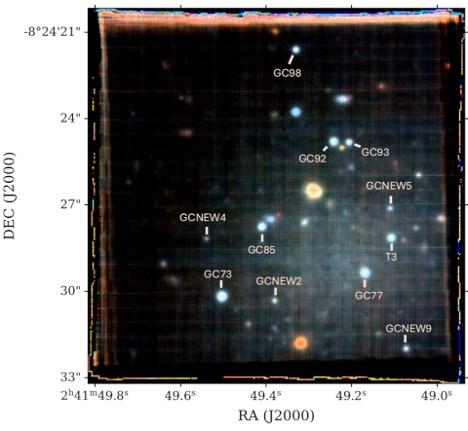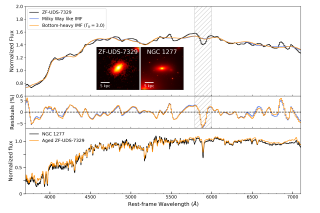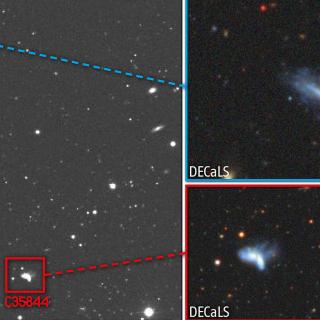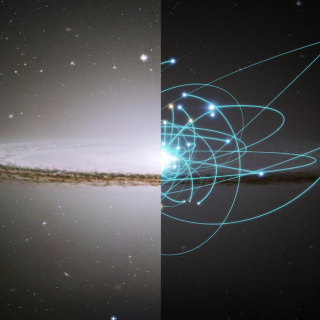One of the key challenges in astronomy is to measure accurate distances to celestial objects. Knowing distances is crucial since it allows us to measure physical properties such as size, mass and luminosity. Since we can’t go out and use a tape-measure, a range of different approaches have been developed. Many of these approaches rely on using “standard candles”. Standard candles are objects (for example stars or supernovae) for which we know their intrinsic ”true” brightness. Once we know this, then their observed brightness compared to their intrinsic brightness gives us a distance to the object in question. However, all of these approaches suffer from systematic uncertainties, and as we begin to look at “extreme” objects in the Universe, these uncertainties can lead to serious errors in distances, and therefore errors in the physical properties measured.
A good example of this problem is in understanding the properties of “NGC1052-DF2”. This is a faint, low surface brightness galaxy somewhere between 10 and 25 Mpc in the direction of the massive elliptical galaxy NGC1052. At a distance of 22 Mpc, the movements of the stars and star clusters in DF2 seem to suggest that this galaxy has very little, or no, dark matter [1]. Since the vast majority of galaxies in the Universe seem to have dark matter - i.e., an invisible mass which cannot be accounted for by all the stars, gas and dust that we actually observe - this galaxy presents something of an enigma and could challenge our ideas about how galaxies form.
However, this galaxy is so faint and of such low density that the usual “standard candle” techniques to measure its distance may not be reliable. We developed a new technique to measure distances based on globular star clusters (GCs)[2]. GCs in the Milky Way, Andromeda galaxy (M31) and other Local Group galaxies obey a tight relation between their stellar velocity dispersions (a measure of how fast the stars in the GCs move) and their absolute magnitudes. Thus, GCs can be used as a standard candle. We applied this approach to the GCs of DF2 [3] using deep spectroscopy from the ESO Very Large Telescope FLAMES instrument in Chile. We found a distance to DF2 of 16 Mpc, some ~40 % closer to us than the previous literature estimate. This closer distance suggests that DF2 has a fairly low, but reasonably “normal” quantity of dark matter compared to what was previously suggested, making DF2 appear more like other dwarf galaxies in the local Universe. However, the measurement of both precise and accurate distances in astronomy remains a key issue in astronomy, and our work is unlikely to be the final word on the matter!
[1] Shen, Z. et al., 2021, ApJ, 914, 12
[2] Beasley, M.A. et al., 2024, MNRAS, 527, 5767
[3] Beasley, M.A. et al., 2025, A&A, 697, 144



